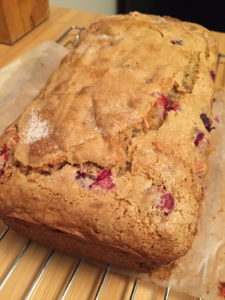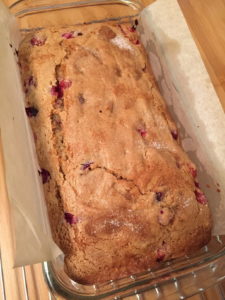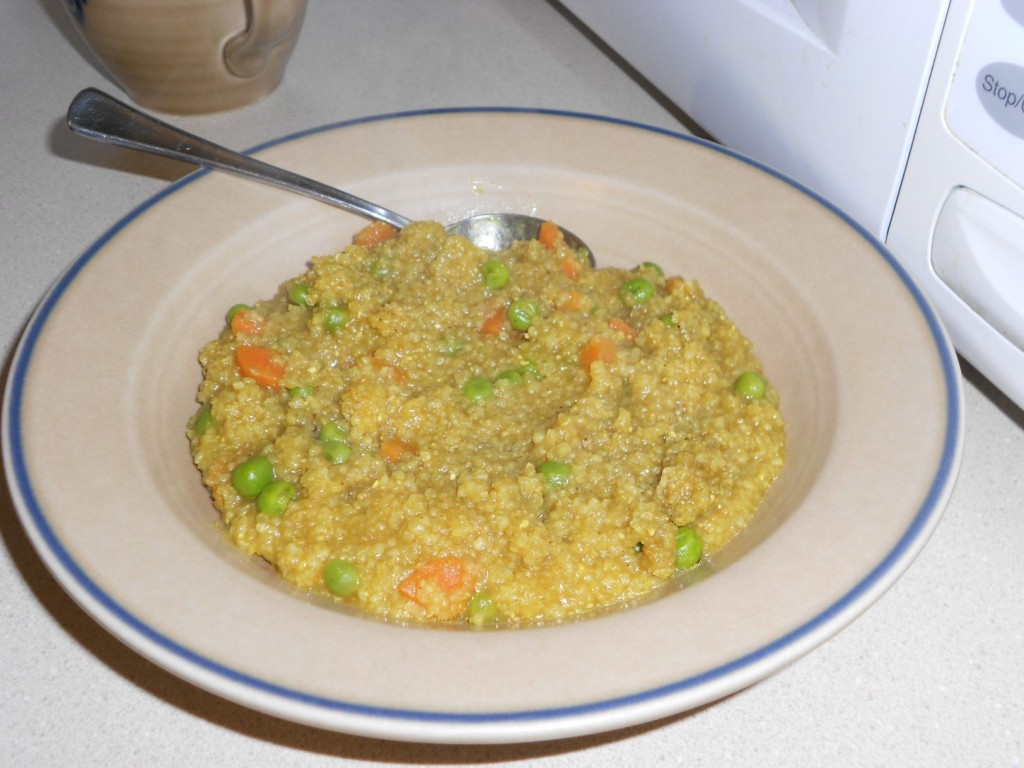Gluten-free Dairy-free Cranberry Orange Quick Bread
The refreshing taste of orange combines with the tartness of cranberries to make a delicious breakfast bread that’s good enough to be dessert too!!
[adapted from the Cranberry Nut Bread recipe in Annalise Roberts’ Gluten-Free Baking Classics, Second Edition, 2008]
Ingredients
- 2 cups flour (I use Bob’s 1:1 Gluten Free Baking Flour) (see note below)
- 1 cup sugar
- 1 teaspoon baking soda
- 1 teaspoon cream of tartar (see note below)
- 1 teaspoon salt
- 1/4 cup oil
- 3/4 cup orange juice
- 1 egg, well beaten
- 2 cups fresh cranberries, coarsely chopped (may use frozen berries)
- 1/2 cup finely chopped walnuts
- 1 Tbs. orange zest (optional)
Instructions
- Preheat oven to 350° F. Grease a 9×5″ loaf pan then line it with parchment (see note below). Lightly grease the parchment (not absolutely necessary but helps prevent sticking).
- Whisk all dry ingredients together in a large bowl.
- In a separate bowl, combine oil, orange juice, egg, and orange rind (if using).
- Pour wet ingredients into dry ingredients, stirring to mix just enough get everything moistened. Carefully fold in the nuts & cranberries.
- Spread into your prepared loaf pan. Sprinkle some granulated sugar on top (optional but gives a yummy crunchy top).
- Bake for 50 – 60 minutes, rotating at about the 30 minute mark. Test for doneness with a toothpick. It should come out clean.
- Let pan sit on wire rack for about 15 minutes, then lift bread out of pan with parchment handles and cool completely before slicing.
Notes
- Bob’s 1:1 GF Baking Flour contains xanthan gum. If you are using another blend that does not contain gum, add 1 teaspoon of either xanthan or guar gum to the dry ingredients.
- I no longer use baking powder because most brands contain corn starch (and I have a corn allergy). I use a blend of baking soda and cream of tartar as a substitute. If you don’t have cream of tartar and do have baking powder and baking soda you can use 1-1/2 teaspoons baking powder plus 1/2 teaspoon baking soda in place of the baking soda and cream of tartar listed in the recipe above. Send me a message if you want the formula for baking soda + cream of tartar = baking powder. It’s a bit complicated because the corn starch is just a filler, so you’re really only replacing the other aspects of the baking powder.
- If you use an 8″x12″ piece of parchment it will fit nicely and give you “handles” on the sides to help remove the bread from the pan later.
©2018 Lucinda DeWitt









